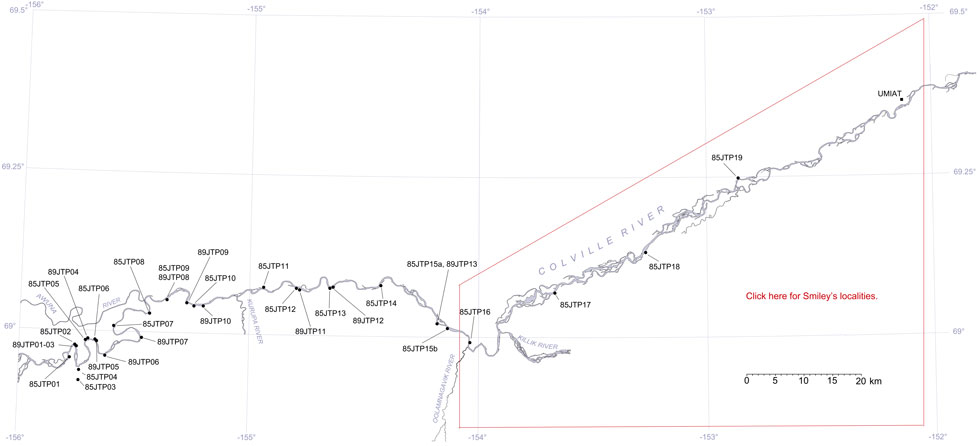Upper Colville River, Alaska
| Upper Colville Fossil Images Unassigned | No Images for 85JTP04 |
|---|
This interactive map of part of the Colville River, Northern Alaska, shows the locations of plant fossil collections made by J.T. Parrish and R.A. Spicer in 1985 and 1989. Click on a number for more details on that site. The red outlined area links to another map showing positions of florules (plant fossil assemblages) collected by C.J. Smiley along both the Colville and Chandler Rivers. |

Locality 85JTP04
This locality is on the south side of the Colville River just downstream of the mouth of Kucher Creek. Exposures are mapped as representing the marine Tuktu Formation of Chapman et al. (1964). The section, as logged by J.T. Parrish in July 1985, is as follows:
| Top of section | ||
| 0.3 m | Gray fine to very fine sandstone with coarse sand-pebble grains incorporated. These form a basal lag in places, with mud rip ups and bivalves. No inocermid debris was seen. | |
| 0.05 m | Claystone | |
| 0.25 m | Indurated white-weathering gray claystone | |
| 0.05 m | Gray claystone | |
| 8 m | Green fine sandstone, orange-weathering in some horizons. Parallel current laminations, cross-bedded near the top. Rare pebbles in float below the upper part of the section. The sand coarsens to medium-grained where the cross beds become more pronounced and contains abundant plant debris. | |
| Base of section |
